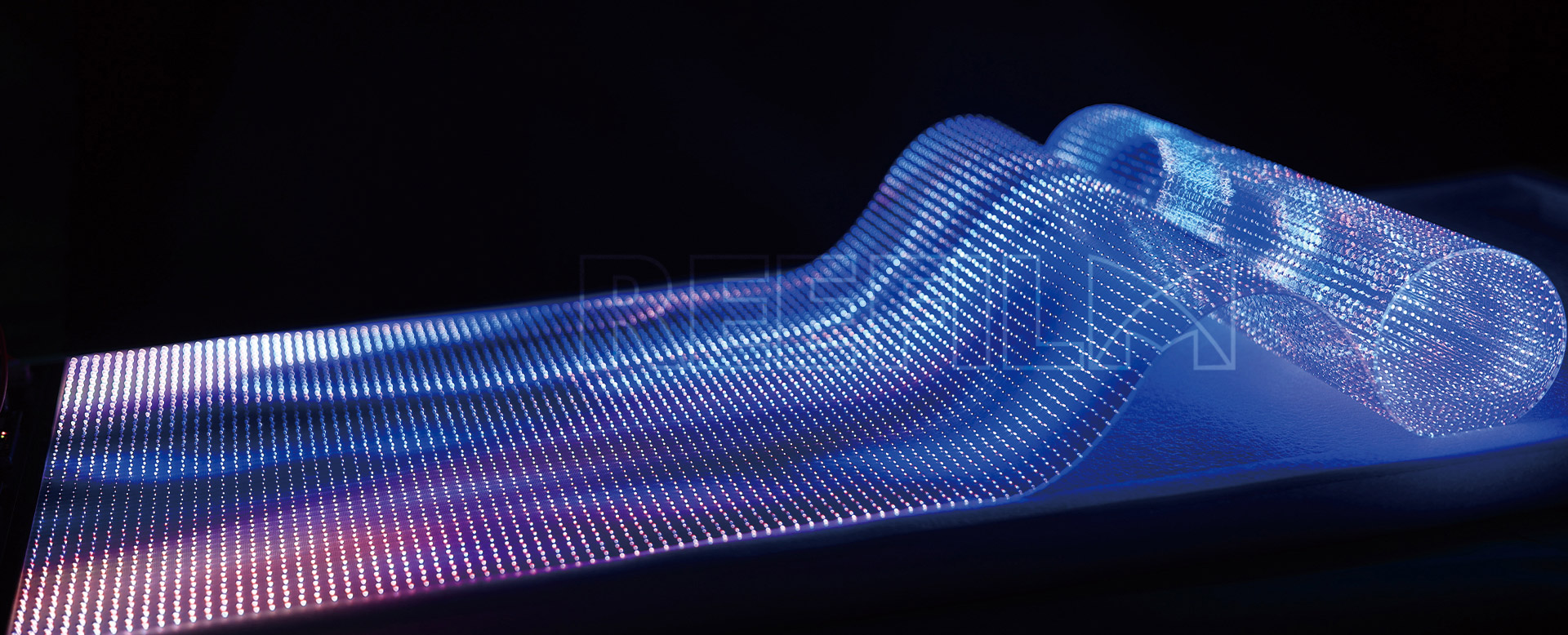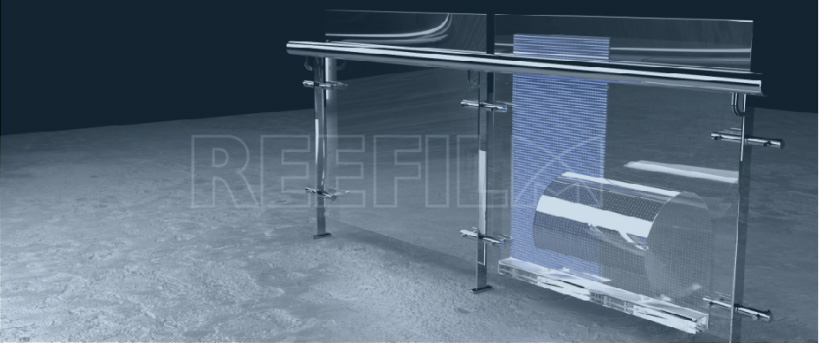
Flexible Transparent Led Screens combine three core advantages—flexibility (adapt to irregular surfaces), transparency (preserve light transmission and spatial depth), and high-quality LED display—making them uniquely suited for scenarios where traditional rigid or opaque displays fail to meet aesthetic, spatial, or functional needs. Their common applications span commercial advertising, architectural decoration, retail, stage visual experiences, transportation, and cultural art, with specific use cases detailed below:

This is one of the most representative application scenarios, as flexible Transparent LED Screens solve the conflict between "display function" and "architectural aesthetics/lighting needs" for buildings.
Curved Glass Facades: Many modern buildings feature curved or arc-shaped glass exteriors (e.g., skyscrapers, museums, airport terminals). Flexible Transparent Led Screens can be seamlessly attached to these irregular glass surfaces—they maintain 70%-95% transparency, so natural light still penetrates the building during the day, avoiding the "opaque blockage" of traditional LED walls. At night, the screen displays dynamic content (e.g., city cultural themes, brand stories, light art) to turn the building into a "glowing landmark."
Glass Atriums & Skylights: For indoor large-span spaces like shopping mall atriums or hotel lobbies with curved glass skylights, the screen can be installed on the skylight surface. It does not block sunlight during the day but transforms into a dynamic "sky curtain" at night, showing stars, clouds, or event-themed animations to enhance the space’s sense of technology and luxury.
In high-traffic commercial areas, flexible Transparent LED Screens attract audiences while avoiding obstructing the view of storefronts or indoor spaces—an advantage that rigid opaque screens lack.
Curved Storefront Windows: Luxury brands, electronics stores, or flagship stores often use curved glass windows to highlight their design sense. Mounting flexible transparent LED screens on these windows allows them to play product promotional videos (e.g., a watch brand showing craftsmanship details, a smartphone brand demonstrating features) without blocking customers’ view of the store’s interior displays. During non-business hours, the screen can also display brand culture content to enhance brand image.
Indoor Curved Advertising Columns: Shopping malls, airports, or train stations often have cylindrical or oval structural columns. Wrapping flexible transparent LED screens around these columns creates 360° circular transparent displays—passengers can see through the screen to the opposite side of the column, while the screen plays ads, wayfinding information, or local cultural content (e.g., airport columns showing tourist attractions of the city).
Stage design increasingly pursues "boundaryless" and "customized" visuals, and flexible transparent LED screens meet this demand by adapting to diverse stage structures and preserving spatial layering.
Curved Transparent Backdrops: In concerts, musicals, or award shows, the stage may require curved or wave-shaped backdrops. Flexible transparent LED screens can be bent into these shapes to form a semi-transparent "visual curtain"—for example, during a singer’s performance, the screen can display flowing light effects or abstract patterns while allowing the audience to see the musicians or dancers behind the screen, creating a layered and immersive stage atmosphere.
Transparent Props & Costumes: For avant-garde theater or theme park shows, the screen can be made into flexible transparent props (e.g., a curved "magic mirror" that displays dynamic images) or even integrated into performers’ costumes (e.g., a dancer’s transparent curved skirt panel that lights up with the music). This breaks the limitation of traditional rigid screens and makes the performance more interactive and visually striking.
Transportation spaces (airports, high-speed rail stations, subways) have strict requirements for "space utilization" and "view clarity," and flexible transparent LED screens balance information display with unobstructed views.
Curved Glass Partition Screens: In airport lounges or high-speed rail VIP areas, curved glass partitions are often used to separate spaces. Installing flexible transparent LED screens on these partitions allows them to display real-time flight/train information (delays, gate changes), weather updates, or quiet promotional content (e.g., hotel recommendations for travelers) without making the space feel cramped (since the screen is transparent, it does not visually block the partition).
Subway/Tram Window Displays: Some modern trams or subway cars use curved glass windows. Mounting ultra-thin flexible transparent LED screens on the inner side of the windows enables them to play route maps, station introductions, or short public welfare videos during the ride—passengers can still see the street scene outside the window, avoiding the "closed-in" feeling of traditional in-car screens.
In cultural spaces, the goal is to blend "technology" with "art" without destroying the original aesthetic of the space—flexible transparent LED screens excel at this.
Museum Curved Exhibit Cases: For exhibits like ancient cultural relics (e.g., curved bronze vessels) or modern artworks, museums can use curved transparent LED screens to wrap around the exhibit cases. The screen displays 3D models of the relics, historical background animations, or the artist’s creative process while allowing visitors to clearly see the real exhibit inside the case—this enhances the educational value of the exhibit without obstructing the view.
Public Art Sculptures: In city squares or art districts, flexible transparent LED screens can be shaped into curved, spiral, or irregular art sculptures. For example, a "transparent wave sculpture" in a square—during the day, it is a transparent artistic structure that blends with the surrounding environment; at night, it displays dynamic light patterns synchronized with the wind or music, becoming a new landmark for citizens to take photos and interact with.
The core value of flexible transparent LED screens lies in "not compromising functionality for form": they retain the transparency needed to preserve spatial light and views, while using flexibility to adapt to non-planar surfaces—filling the gap between traditional rigid displays (inflexible) and standard transparent displays (only planar). This makes them irreplaceable in scenarios where aesthetics, space, and display effects must coexist.